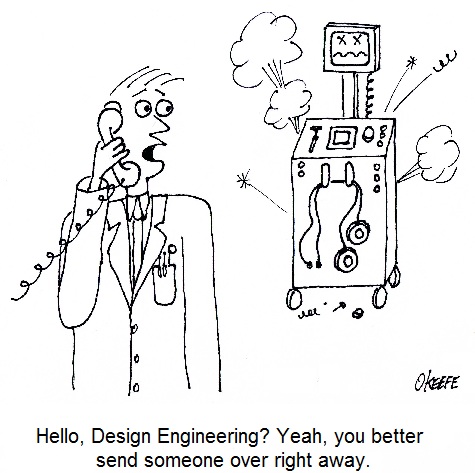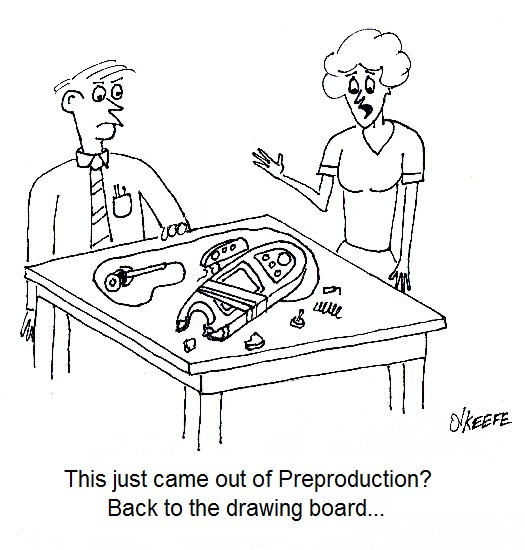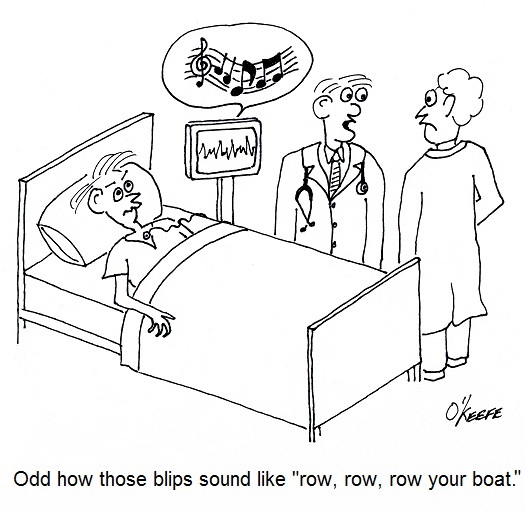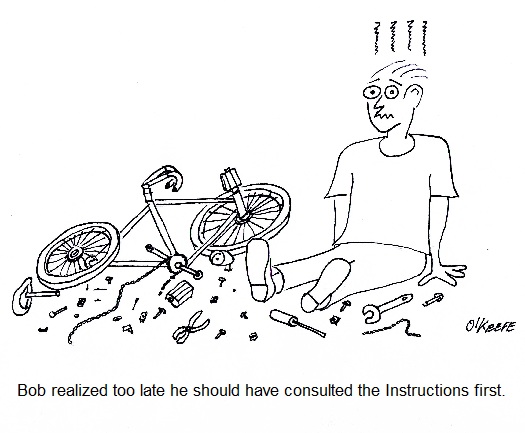| Done any remodeling lately? If you have, you’ve been faced with countless choices regarding design and materials. Even a relatively simple decision such as putting in hardwood flooring requires many considerations. What type of wood? What grade? How about the stain? Should it be factory stained and sealed, or should the flooring be installed by single board, then stained and sealed in place? Ultimately, your decision is based on your requirements with regards to cost, durability, and personal style.
Now imagine the decision making process that is required to produce a medical device. We’ve been discussing this complex process during our series on medical device design utilizing the systems engineering approach, a systemized approach to product development, design, and manufacture that is used within many manufacturing arenas. Its objective is to relate the requirements for manufacture, regulatory compliance, sale, use, and maintenance of the product to specific design criteria for functionality, durability, and safety. By doing so, the systems engineering approach ensures that the product meets or exceeds all requirements. Last time we wrapped up our discussion on the Development stage of systems engineering by discussing field testing of medical devices assembled during Preproduction. Problems encountered during this phase result in a comprehensive review of the device design and instructions. When all issues have been resolved, things move on to the manufacturing phase and full commercial production. During the Production stage, engineers make continual assessments of the manufacturing process and ongoing adjustments are made to the device design and manufacturing protocol as necessary, this due primarily to changing stakeholder requirements regarding cost reduction. In the competitive marketplace, cost reduction is a never-ending quest to maintain profitability in view of changing economic and market conditions, and this must be done without compromising the quality, safety, and effectiveness of the device. For example, suppose a medical diagnostic imaging machine was designed to be fitted with a machined metal gear in one of its mechanisms. The manufacturer specifies that a $10 decrease must be made in production costs so it can continue to be sold at an acceptable profit margin. After reviewing the design, engineers discover that substitution of a molded plastic gear would reduce manufacturing cost per machine by $12. This is a common scenario, as plastic parts are often substituted for metal to save on cost. Plastic versus metal? How can that be an acceptable swap? In many cases, it can be. Mechanical stressors are analyzed, and if the plastic gears meet durability requirements as well as their metal counterpart, they are substituted. During the Preproduction phase these plastic gears are used in both lab and field testing, where they are put through the rigors of real world use. If they perform acceptably, they are made a permanent part of the device’s design and used in commercial production. Next time we’ll continue our look at the Production stage to discover another way that systems engineering can facilitate cost reduction to meet stakeholder requirements. ___________________________________________ |
Posts Tagged ‘Development Stage’
Systems Engineering In Medical Device Design – Preproduction, Part 3
Monday, February 18th, 2013| We’ve been discussing the Preproduction aspect of the Development stage of our systems engineering approach to medical device design. Last week we learned that once the medical devices produced during Preproduction are assembled, they’re subjected to rigorous testing, first in the lab, then in the real world.
Once devices produced in Preproduction pass the test in a controlled laboratory environment, it’s time to place them into field testing. The objective is to place Preproduction devices within actual working environments, such as healthcare facilities. These facilities must be willing to cooperate with design engineers during testing on a number of items, including but not limited to evaluation of product performance and clarity of instructions. In order for this to happen, design engineers must coordinate their efforts with their company’s sales and marketing departments to locate, qualify, and enlist suitable facilities. To qualify, a facility must be able and willing to put enough hours of use onto the test device to effectuate a thorough and complete analysis of its effectiveness. Depending on FDA regulatory requirements and the complexity of the design, field testing could take as little as several months or as long as several years. During field testing valuable data is gathered to enable engineers to evaluate the performance of the Preproduction devices. This data will then be measured up against stakeholder requirements. What this process might entail in a dialysis machine, for example, is that test data is analyzed to make sure all operational parameters fall within the desired range. Data would be derived from measurements of such things as the pressure of blood flowing pre- and post- introduction to the dialyzer. Measurements are dutifully recorded by engineers and field personnel onto data sheets for later evaluation back at the manufacturer’s engineering office. Persons contributing data vary widely, from healthcare facility end users and maintenance personnel, to the medical device dealer’s service technicians. End users also provide feedback to design engineers regarding the field test device’s functionality, effectiveness, reliability, and maintainability. Feedback can include specific information about things like glitches in software, unusual noises, erratic operation, breakdowns, and even difficulties encountered during repairs. If any problems are discovered with the device during lab and field testing, revisions are made. Design engineers and technical writers get back to the drawing board to rework things and find resolutions until all issues have been addressed. Only then is the design presented to stakeholders for final approval. If all goes well, manufacturing will now take over and place the device into full commercial production. We have now concluded our discussion on the Development stage of systems engineering as it relates to medical device design. Next time we’ll move on to the Production stage where we’ll examine post-production concerns. ___________________________________________ |
Systems Engineering In Medical Device Design – Preproduction, Part I
Monday, February 4th, 2013| If you’ve been following along with our blog discussion on the systems engineering approach to medical device design, you should by now be convinced that instructions are important. In fact, the meticulous instructions produced during the manufacturing, operating, and maintenance phases of the Development stage are also crucial to later stages, that of Production and Utilization. Let’s finish up our discussion on the Development stage by taking a look at its final aspect, Preproduction.
The Preproduction aspect is instrumental to nipping potential problems in the bud before the medical devices go into actual production. In the initial Preproduction stages, systems engineers coordinate with the manufacturing and purchasing departments within the company as well as outside suppliers. The goal is to acquire all parts and equipment necessary to build a limited number of medical devices on the assembly line. Subjects such as preference in molded plastic components, motors, gears, pumps, springs, electronic components, circuit boards, wire, and tubing are discussed and agreed upon. Vendors are assessed with regard to their ability to produce parts when they are needed and that meet design specifications, satisfy quality requirements, and have costs that fall within budgetary constraints. The assembly of Preproduction devices provides an opportunity for systems engineers to validate manufacturing and quality control instructions and assess the device design with regard to manufacturability, meaning, the extent to which devices can be manufactured with relative ease, at minimal cost, while maintaining maximum reliability. Devices manufactured during this aspect of the Development stage serve as a test. Are instructions clearly written? Do the device parts fit together as they should? Are parts strong enough to withstand the assembly process? Can the devices be assembled as quickly and easily as expected? If the answer is “no” to any of these questions, then the device design and instructions must be returned to the design engineers and technical writers. Heads come together to rehash things and work out the bugs. Next time we’ll continue with the Preproduction aspect of the Development stage to see how laboratory and field testing enables systems engineers to shake out any more bugs from the medical device design, operating instructions, and maintenance instructions. ___________________________________________ |
Systems Engineering In Medical Device Design – Instructions, Part 3
Sunday, January 20th, 2013| Last time we looked at the objective of the quality control department in the Production stage, that being to ensure that the end product produced fits all requirements. We learned that to meet this objective a great deal of collaboration must take place in the Development stage between quality control staff and design engineers in order to produce a complete set of instructions for quality control inspection and testing. Now let’s see how these instructions are developed.
Inspection and test methods are devised by the quality control department to ensure that a completed medical device lives up to its intended use. What good is a diagnostic imaging machine that doesn’t provide accurate internal views of a patient’s body? Or a heart defibrillator that sends electrical energy pulses to a patient’s heart muscles when it’s not supposed to? Quality control instructions are developed to guide inspection and testing methods so they’re performed correctly and consistently during the medical device Production stage. The objective is to catch problems before they occur. For example, it can be specified that the plastic body components of a medical device be visually inspected after they are received from an outside vendor to check for undesirable defects, such as the presence of burrs, cracks, or non-uniform coloration. If anomalies are discovered, they’re documented, and the components are rejected. In other words, they are barred from being used in the assembly process. Quality testing methods are varied. They may involve hooking up the completed medical device to test instruments to simulate all possible modes of operation and any anticipated glitches that may occur during testing. While hooked up, the device’s operation is measured against key parameters to ensure that all is working well, and the data gathered is recorded and analyzed to see if operation is within normal limits. For example, an electric multimeter could be connected to the power cord of the device to measure how much electrical current is being drawn from the wall outlet during operation. If current drawn is too high, it may be indicative of a defective electrical component, and an in depth examination would follow. Generally speaking, if test measurement parameters do not fall within acceptable limits as determined by previously established stakeholder requirements, then the medical device will be rejected by quality control. It will then be sent back to the manufacturing department, along with a detailed inspection and test report explaining why it was rejected. At this point the rejected device is either reworked or disposed of entirely. Next time we’ll continue our discussion on the development of instructions for the Utilization stage, the stage where the medical device is actually put into use by the end user. ___________________________________________ |
Systems Engineering In Medical Device Design – Instructions, Part 2
Monday, January 14th, 2013| Last time we discovered that clearly written instructions are one of the desired end results of the Development stage of the systems engineering approach to medical device design. We learned that one of the objectives of these instructions is to make sure the devices are manufactured in a cost effective manner and with minimal defects during the Production stage.
Other instructions created during the Development stage are those addressing quality control inspections and testing instructions. The objective of the quality control department is to ensure that, during the Production stage, the end product has been assembled correctly, making use of the prescribed parts, and absent manufacturing defects. This end is achieved by virtue of the fact that the quality control department staff is usually not under the management of the engineering or manufacturing departments, therefore they are positioned to offer an impartial assessment of the production process. An undesirable side effect of quality control’s impartiality is that because they are not intimately involved in the design process, a great deal of collaboration must take place between them and design engineers to produce quality control instructions which meet objectives. To this end, many discussions must take place concerning subject matters as diverse as requirements for component dimensions, component material properties, and the proper assembly of parts. Next time we’ll continue our discussion on the Development stage by further examining how instructions are developed to ensure that the quality control department meets its objectives while performing inspections and tests during the Production stage. ___________________________________________ |
Systems Engineering In Medical Device Design – Instructions, Part I
Monday, January 7th, 2013| You know those instructional inserts that come in just about everything you buy? If you’re lucky they’re a one-pager, showing a simple illustration of how your purchase works. But sometimes they’re multiple pages long, even approaching the length of a short story. This is often the case when the item in question is complex and contains many parts.
If you’re like some people you try to avoid reading these instructions, preferring to forge ahead to the assembly/usage stage as quickly as possible, and you’ve probably had your fair share of times that this approach didn’t pan out. You were forced to re-do things and crack open the instruction manual anyway. If the instructions were written clearly, you may have eventually come to regard them as indispensable. Clearly written instructions are one of the desired end results of the Development stage of the systems engineering approach to medical device design that we’ve been discussing. These instructions flow naturally from the finalized detailed design which has been produced earlier in this stage. Instructions aid consumers in the assembly, usage, and maintenance of the device, making for a satisfied customer. Instructions also aid in the efficient and proper manufacture of devices. Without them assembly personnel wouldn’t work as efficiently, and the end result might not be a desirable one. It’s easy for parts to end up where they don’t belong, adjustments to be off, etc. Just think about the last “assemble it yourself at home” project you were involved in. The desired result is for instructions produced to be well defined and capable of instructing line assembly personnel in the actual construction of the medical device that takes place during the Production stage. Subjects such as parts identification, assembly procedures, and layout of assembly lines are discussed, all of which are needed to plan out the manufacturing process effectively. The objective is to manufacture the devices in a cost effective manner and with minimum probability of defects. Next week we’ll continue our discussion on instructions, focusing on those that are produced during the Development stage that serve the purpose of guiding quality control technicians during the Production stage. ___________________________________________ |












